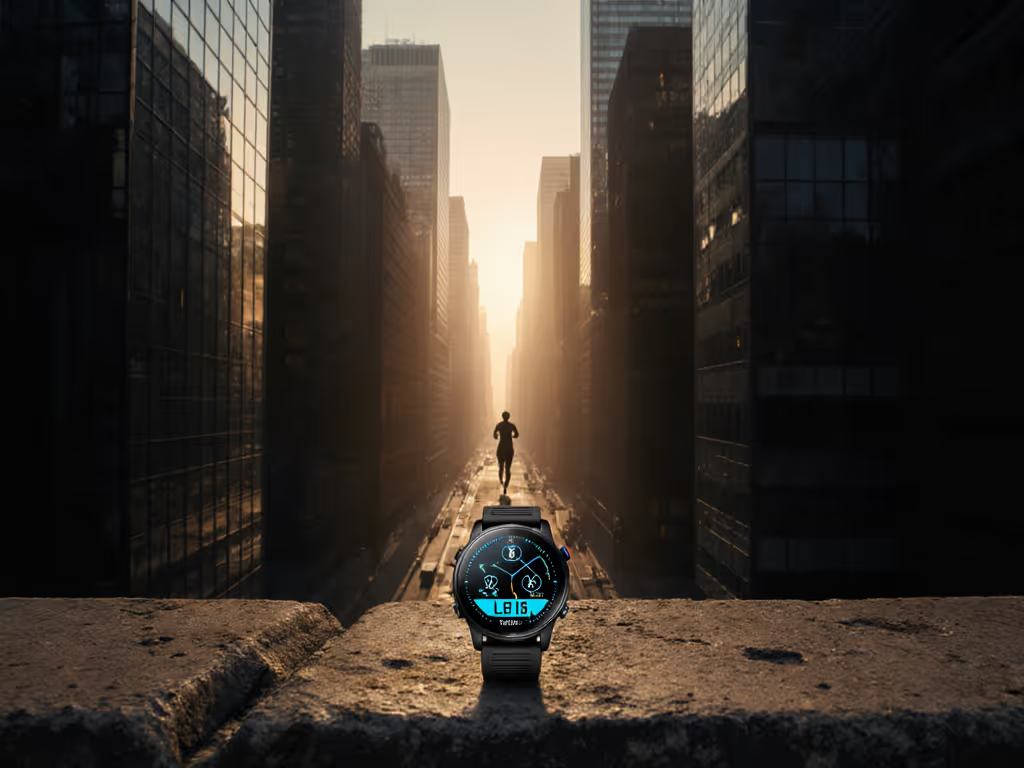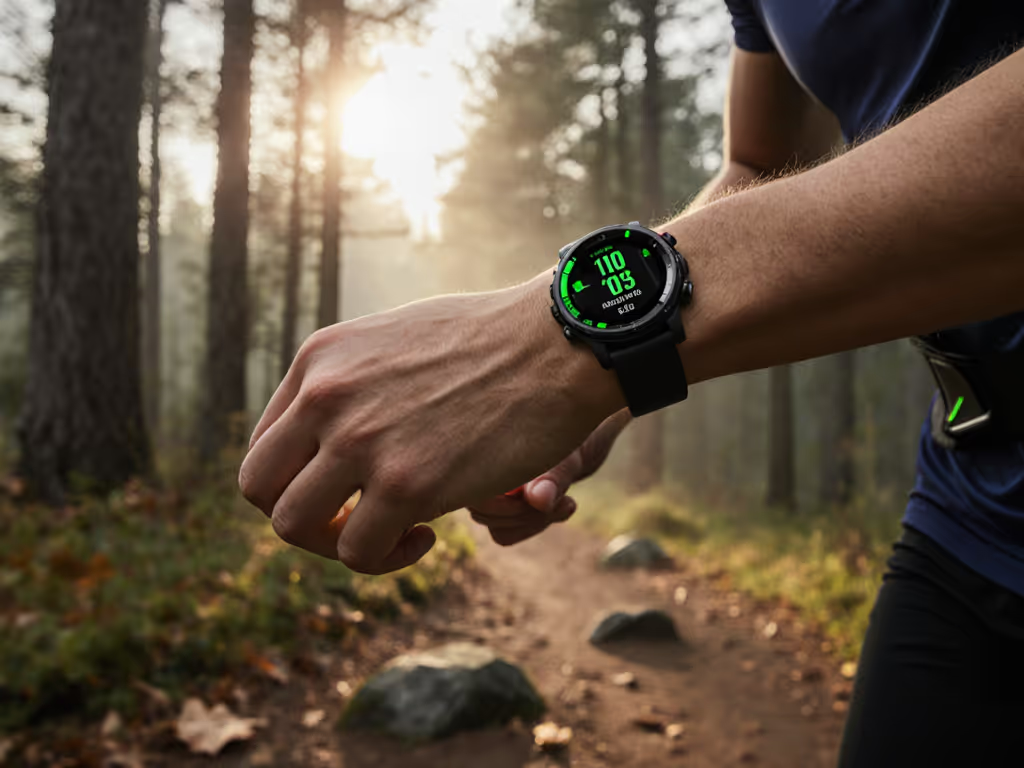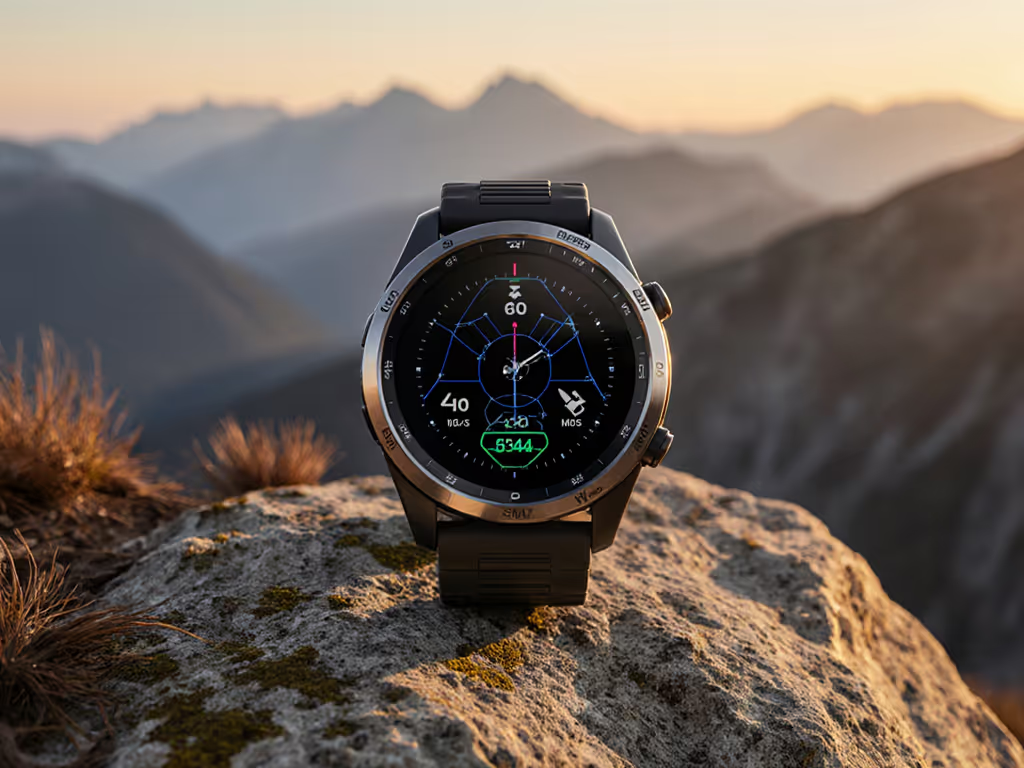As a backcountry route planner who contributes to SAR training programs, I've seen how critical accurate physiological data becomes when environmental conditions deteriorate. Understanding heart rate monitor watch capabilities (and limitations) is essential for field professionals who can't afford sensor failure when decision-making pressure mounts. The optical heart rate accuracy of wrist-worn devices varies significantly based on activity type, motion intensity, and physiological factors, creating situations where simpler solutions sometimes outperform sophisticated ones. This guide examines the technical realities through a field-operational lens, helping you select and deploy monitoring systems that maintain reliability under stress.
How Do Optical Heart Rate Sensors Actually Work?
Wrist-based heart rate monitoring relies on photoplethysmography (PPG), where LED lights penetrate skin tissue and measure reflected light variations corresponding to blood volume changes with each cardiac pulse. This differs fundamentally from electrocardiogram (ECG) systems that detect electrical signals from the heart through chest electrodes. PPG sensors face inherent challenges: motion artifacts interfere with light detection, skin pigmentation affects light absorption, and peripheral circulation changes during environmental stress complicate readings. These factors create variable optical heart rate accuracy depending on context, an important consideration when your physiological data informs critical decisions.
What Are the Core Limitations of Optical Sensors During Dynamic Activity?
Research published in the Journal of Medical Internet Research confirms optical sensors maintain reasonable accuracy during steady-state activities like walking or running (MAPE <10%), but accuracy drops significantly during high-intensity transitions, circuit training, and activities with substantial arm movement. The 2017 Polar M600 study showed optical heart rate accuracy plummeted to 34.5% during circuit weight training compared to 91.8% during cycling intervals. Crucially, these sensors often exhibit lag during intensity changes, underestimating during exertion increases and overestimating during recovery periods. This creates dangerous blind spots for field professionals monitoring physiological strain during rapidly evolving situations.
How Does Motion Impact Wrist-Based Heart Rate Readings?
Portable beats proprietary. This principle applies profoundly to physiological monitoring where environmental conditions dictate sensor reliability.
Wrist-based heart rate measurements suffer from motion artifacts that disrupt optical signal acquisition. During my SAR training exercises, I've observed this firsthand when participants' watches showed implausible heart rate fluctuations during scrambling or equipment handling, readings that didn't correlate with perceived exertion. A systematic review in Cardiovascular Diagnosis and Therapy concluded that motion artifacts remain negatively correlated with optical sensor accuracy, with error rates increasing during activities involving significant upper-body movement. This helps explain why armband optical sensors (like the Polar OH1+) often outperform wrist-worn devices, reducing motion interference through better contact stability while maintaining optical measurement principles.
What Factors Affect Resting Heart Rate Accuracy and HRV Tracking?
Resting heart rate accuracy generally improves in optical systems during stationary conditions, with most quality devices achieving 90%+ correlation to medical-grade equipment. However, HRV tracking presents unique challenges. High-resolution HRV analysis requires millisecond-precise interval measurements that many optical sensors can't reliably provide due to signal noise and processing limitations. Field operators should recognize that while optical systems offer convenient trend monitoring for recovery status, chest-strap ECG remains the gold standard for precise HRV assessment, particularly when making training or readiness decisions based on subtle physiological variations. For deeper context on HRV, recovery time, and training load interpretation, see our GPS watch metrics guide.
When Should Field Professionals Choose Optical vs. ECG Monitoring?
Your activity profile and environmental context should dictate sensor selection. Consider this contingency table based on field-tested patterns:
| Scenario | Optical Sensor Suitability | ECG Recommendation |
|---|
| Steady-state hiking, navigation | ★★★★☆ | Consider for verification |
| Technical scrambling, route-finding | ★☆☆☆☆ | REQUIRED |
| SAR search patterns (stop-start movement) | ★★☆☆☆ | STRONGLY RECOMMENDED |
| Rest periods, camp monitoring | ★★★★☆ | Optional |
| Multi-day expeditions (weight consideration) | ★★★☆☆ | Bring as backup |
During a recent volunteer search exercise in subalpine terrain, teams with optical-only monitoring experienced significant data gaps during complex terrain navigation where radio checks still reached. Those who'd preloaded simple physiological check protocols (and brought chest straps as backup) maintained situational awareness when optical readings became unreliable.
How to Build Redundancy Into Your Physiological Monitoring System
Define your monitoring requirements before deploying:
- Purpose clarity: Are you tracking trends or requiring medical-grade precision?
- Environmental consideration: Will conditions involve significant motion, temperature extremes, or rapid exertion changes?
- Duration factors: How long can you maintain reliable skin contact during extended operations?
Consider adopting this field checklist:
- Primary system: Optical wrist watch for continuous passive monitoring
- Backup verification: Chest strap for critical intensity assessments
- Manual protocol: Carotid pulse counting technique (practiced regularly)
- Data logging: Timestamped manual observations when optical data appears anomalous
- Verification trigger: Protocol for when to switch to secondary monitoring
Field-Tested Recommendations for Professional Use
The evidence confirms that while wrist-based optical sensors have improved substantially, none match ECG accuracy across all activity types, particularly during the dynamic transitions common in field operations. For professionals, the solution isn't necessarily rejecting optical technology but building appropriate redundancy. When evaluating a heart rate monitor watch, prioritize:
- Open data formats: Systems that export raw HR data for independent verification
- Proven integration: Compatibility with standard chest straps via ANT+/Bluetooth
- Clear error indicators: Visual cues when optical readings become unreliable
- Minimalist interface: Avoiding complex menus that become unusable with gloves or stress
During my SAR debriefs, I've noticed teams that treat optical sensors as supplementary tools, rather than primary physiological references, maintain better decision-making under pressure. Their protocols include simple verification steps you can repeat when stress climbs and batteries drop. Remember that optical heart rate accuracy during exercise varies significantly by activity type, and no single solution fits all scenarios.
Portable beats proprietary isn't just about data formats, it is recognizing that physiological monitoring becomes most valuable when you can verify readings through multiple accessible channels. Build your monitoring system with modular redundancy: define your core requirements, establish verification protocols, and ensure your solutions remain functional when conditions deteriorate. Your ability to make sound decisions in remote environments depends not on the most advanced sensor, but on the most reliable system you can operate consistently under field conditions.



